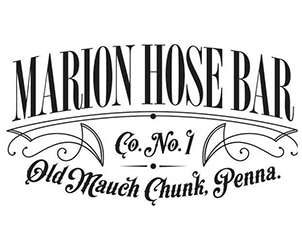By Natalya Bucuy • The Current Contributing Writer
Take a walk up Broadway in Jim Thorpe and the solemn sight of the Old Jail Museum is sure to grab attention. Its fortress-like structure complete with a massive guard turret resembles a medieval castle. The dark stone walls hold the secrets of the prisoners that came and went throughout the jail’s century-and-a-half history.
The two-story building contains 72 rooms in total. That includes 27 old jail cells, a few cells in the ‘dungeon’ basement used for solitary confinement of the inmates, women’s cells on the second floor, and the warden quarters.
Architect Edward Haviland, the son of John Haviland, the designer of the Easter State Penitentiary in Philadelphia, drew the plans for the jailhouse. Upon completion, the building served as the Carbon County Jail from 1870 until 1995.
Every historic jail has its infamous prisoners. This one is no exception. Here, in the 1870s, members of the so-called Molly Maguires organization awaited trial and subsequently faced their deaths by hanging. On June 21, 1877, now known in history as the Day of the Rope, four members of the alleged organization were hanged on gallows erected inside the cell block.
Over 140 years later, the story of Molly Maguires remains controversial. Some say the organization facilitated terrorism and its members were guilty of murder, conspiracy, and other crimes against various mining officials. Others think of the “Mollies” as victims of the coal industry magnates’ efforts to conduct business as they pleased.
During the second half of the 19th century, horrific conditions prevailed in Pennsylvania coal mines. Low pay, often in currencies only accepted by the company-owned stores and cruel child labor were common practices. Lack of safety measures such as emergency exits or ventilation in the mines resulted in near-slavery living and working environment for coal miners and their families. All that lead to unrest among the miners.
At this time many Irish immigrants entered the scene. They fled the famine of Ireland, where some of them belonged to secret societies that opposed British rule and unfair practices by landlords. In America, Irish-born organizer John Kehoe led the movement centered in the Northeastern Pennsylvania coal country, demanding better working and living conditions.
The group is said to be responsible for violent interactions, robberies, and even murders of coal industry supervisors. However, the details of the investigations and prosecutions of these crimes make historians wonder about the validity of the claims. Some are said to be exaggerated, with little or circumstantial evidence. Even the existence of Molly Maguires as an organized group remains unverified.
Historian Harold Aurand calls the Molly Maguires case as “one of the most astounding surrenders of sovereignty in American history. A private corporation initiated the investigation through a private detective agency; a private police force arrested the alleged offenders; the coal company attorneys prosecuted them. The state only provided the courtroom and hangman.”
According to one historical account, Frank Gowen, the president of the Philadelphia and Reading Railroad at the time, was gaining near-monopoly control over Pennsylvania mines at the time. Molly Maguires and their connections with local governments posed a threat.
In the 1870s, Gowen hired the Pinkerton Detective Agency to infiltrate the group. James McParland, an Irish Catholic from Ulster, worked undercover as an informer. His testimony served as the sole basis for Molly Maguires’ indictment and prosecution. Gowen himself, as the district attorney of Schuylkill County at the time, led the prosecution of the Molly Maguires.
The Old County Jail housed the last of Molly Maquires in the days leading to their executions. It is said that one of the prisoners proclaimed his innocence by imprinting his muddy handprint on his cell’s wall. Legend has it that a century of repairs, repaintings, and even removal of that part of the wall couldn’t erase the handprint. Still remaining in the Old Jail Museum, it proclaims Molly Maguires’ innocence.
The Old Jail Museum is open daily for tours 12 noon to 4 om from June 10 to August 27.
For more information visit http://www.theoldjailmuseum.com



























Add Comment